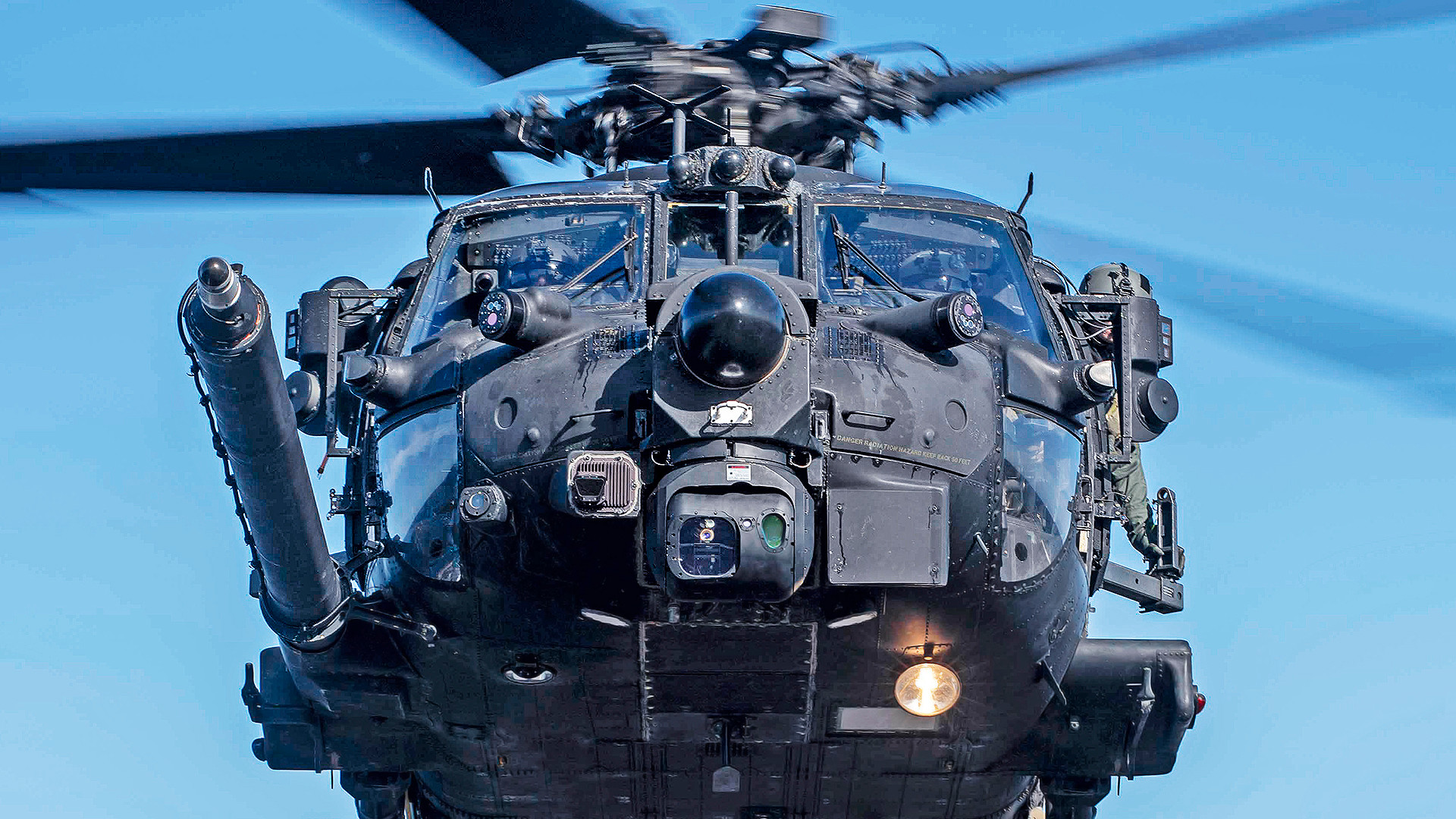It’s no secret that the MH-60M Black Hawks belonging to the U.S. Army’s elite 160th Special Operations Aviation Regiment, also known as the Night Stalkers, are absolutely packed with specialized systems. However, newly released pictures, especially the one seen at the top of this story, give a very clear view of just how much has been added to these helicopters to help them perform critical missions under the most demanding conditions.
These pictures were taken earlier in September somewhere in the Bering Sea between Alaska and Russia. The 160th Special Operations Aviation Regiment’s (SOAR) MH-60Ms were operating there with the help of the U.S. Navy’s San Antonio class amphibious warship USS John P. Murtha.
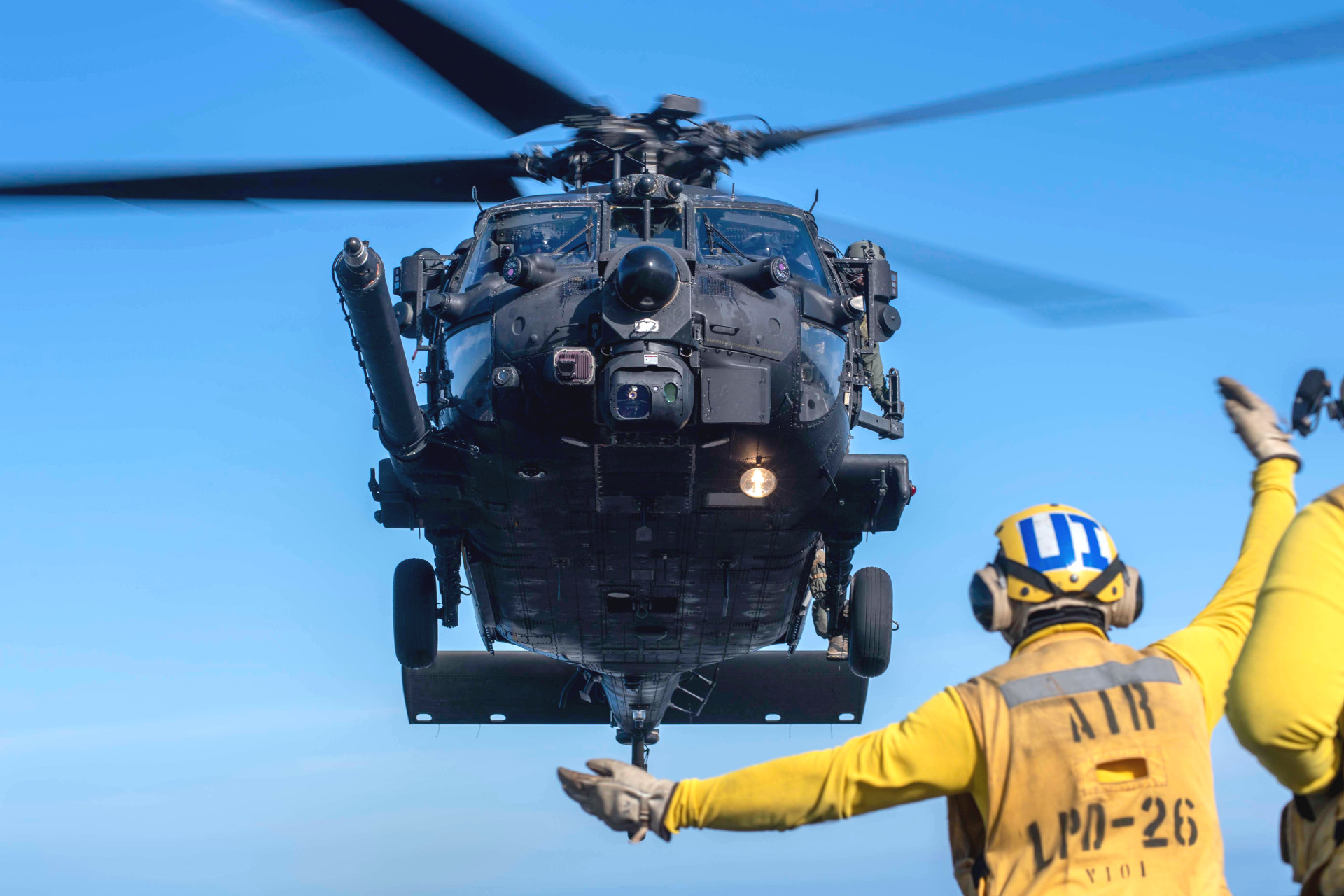
Black Hawks from the 160th SOAR shuttled Navy SEALs to and from the Murtha and conducted other missions as part of a larger special operations capabilities demonstration nicknamed Polar Dagger. The core objectives of this event were to show how special operations forces could help defend critical sites and otherwise support operations in the Arctic and Subarctic regions. The War Zone reported in detail about what MH-60Ms could contribute in these scenarios and the broader significance of Polar Dagger earlier this month.

In the head-on photograph of the MH-60M from Polar Dagger, the things that stand out the most immediately are the helicopter’s terrain-following/terrain avoidance radar on the center of the nose and its AN/ZSQ-2 sensor turret right underneath.
The terrain-following/terrain avoidance radar is an essential tool for the 160th’s Black Hawks, allowing them to safely fly extremely low altitude nap-of-the-earth flight profiles, even in poor weather and at night. This helps keep the helicopters away from enemy air defenses and avoid detection in general.
The MH-60Ms that took part in Polar Dagger appear to be fitted with the AN/APQ-174 radar, which is steadily being replaced by the newer and more capable AN/APQ-187 Silent Knight radar, SKR. This radar is also being integrated onto Night Stalker MH-47G Chinook helicopters, as well as U.S. Air Force CV-22 Osprey tilt-rotors and MC-130J Commando II special operations tanker/transports.

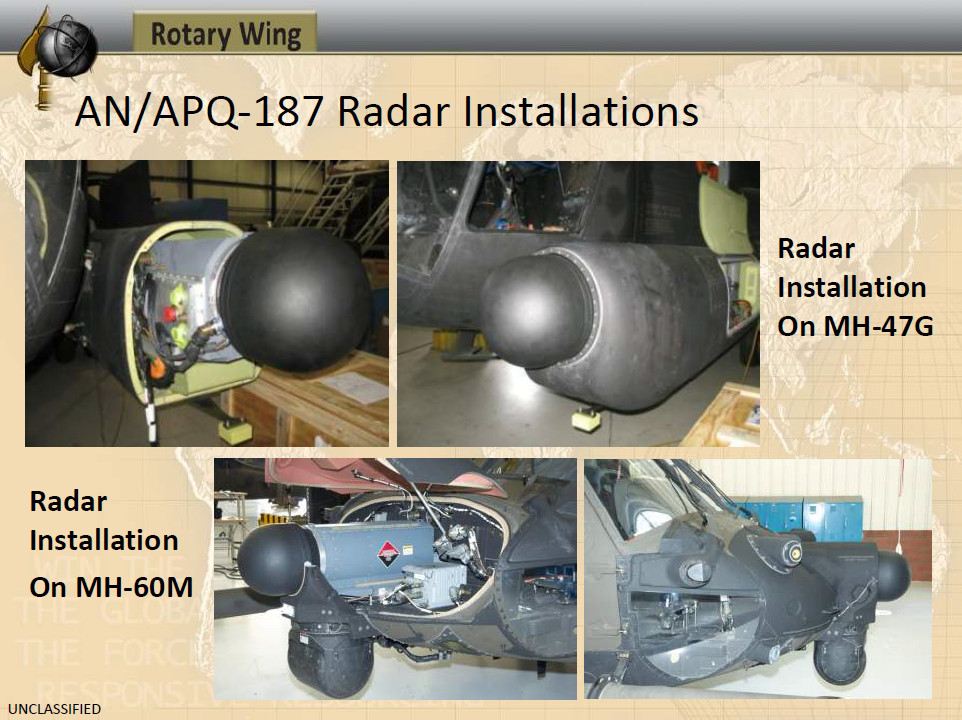
The AN/ZSQ-2 turret has electro-optical and infrared full-motion video cameras, as well as a laser range finder. There is also a version with a laser designator for use on MH-60M configured as heavily armed gunships, also known as Direct Action Penetrators (DAP). DAPs can be armed with laser-guided Hellfire missiles and 70mm Advanced Precision Kill Weapon System II (APKWS II) rockets, among other weaponry.
Another sensor system is also visible to the left of the AN/ZSQ-2. This is associated with the Degraded Visual Environment Pilotage System (DVEPS), which uses a combination of cameras and LIDAR, linked to a terrain database, to help the crew navigate through dust, sand, snow, fog, and other ‘degraded’ environments.
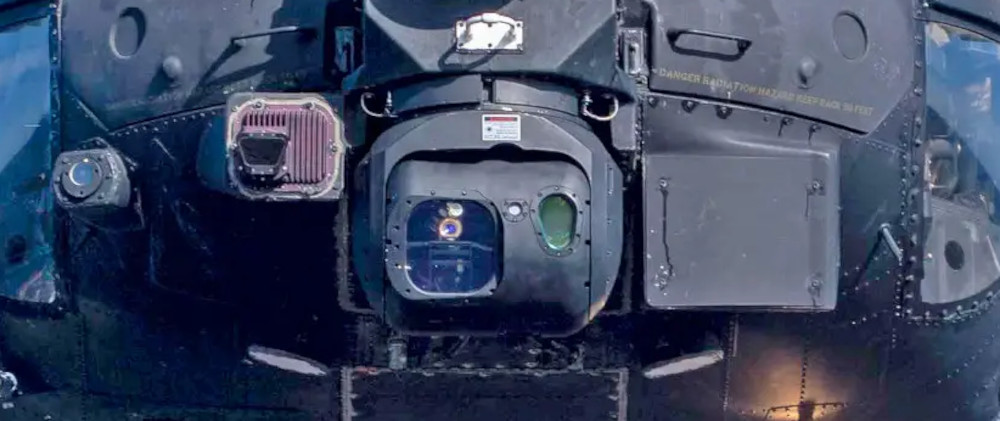

A larger additional sensor that is part of DVEPS is not seen installed on this particular MH-60M, but the fairing for it, on the opposite side of the sensor turret, is present. The picture below shows a different 160th SOAR MH-60M with the complete DVEPS fitted.
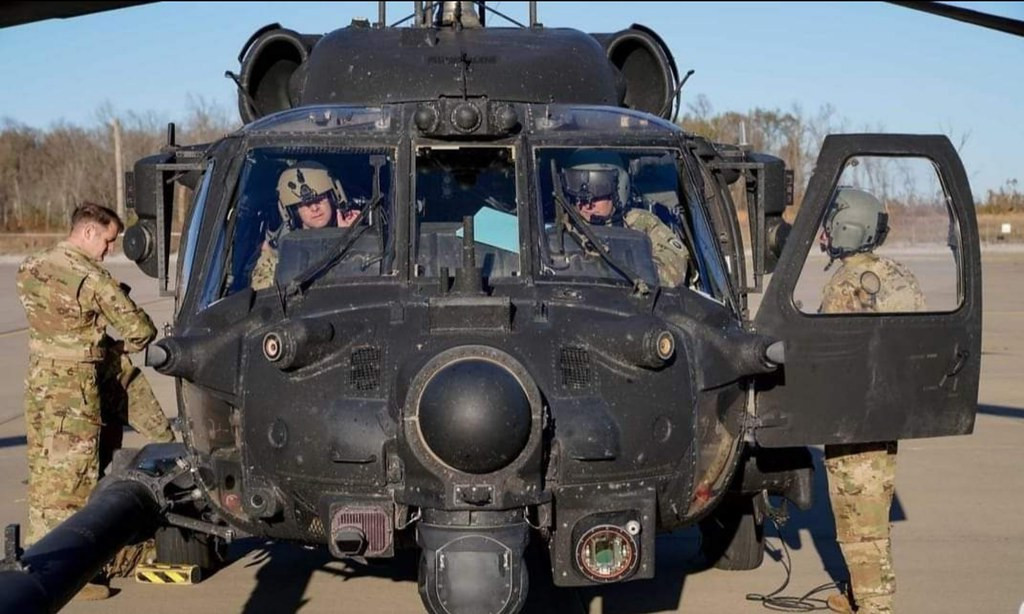
From the front, arrays of defensive systems are also visible along the top of the helicopter’s nose, above its canopy, and on struts on either side of the forward fuselage. These are a mixture of visual/infrared missile, radar, and laser warning sensors, as well as elements of active jammers and other electronic warfare systems. Additional elements of these systems are installed elsewhere along the helicopter to help provide coverage in all directions.
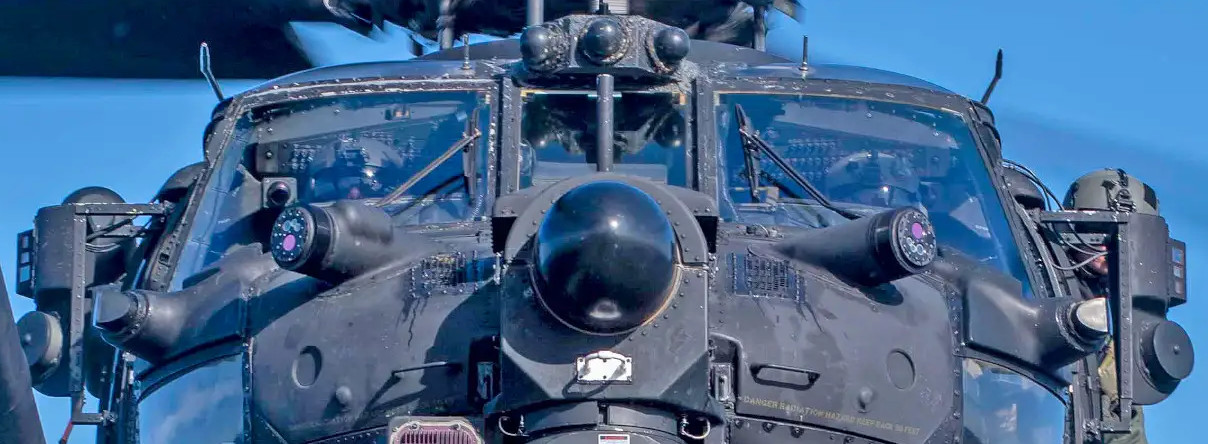
The warning sensors help alert the crew to incoming surface-to-air missiles and other threats, and that they are ‘painted’ by enemy radars or lasers. They are also linked to other self-defense systems and have the ability to automatically trigger the launch of decoy flares and radar-confusing chaff from dispensers on either side of the tail boom.
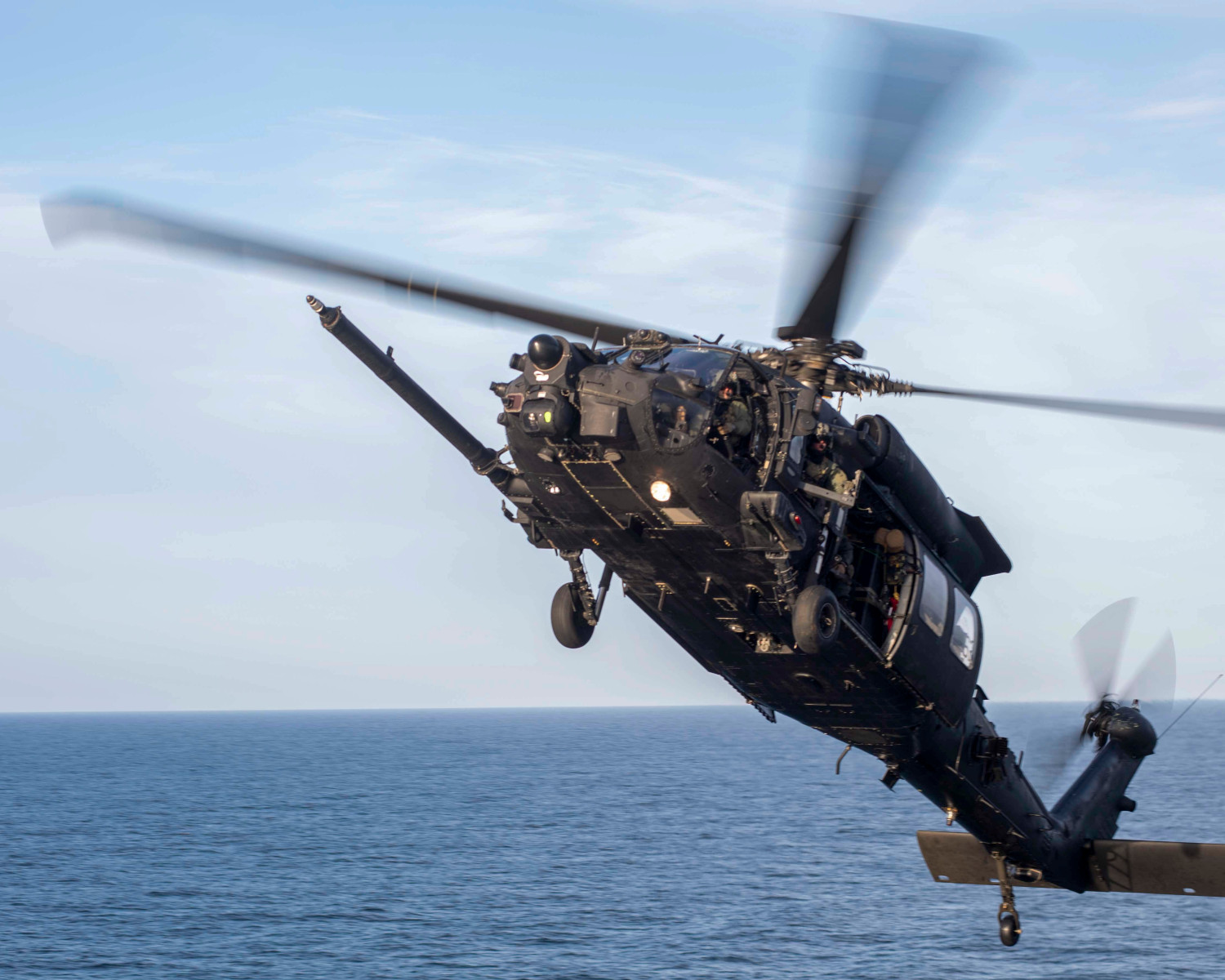
The MH-60Ms from the 160th SOAR that took part in Polar Dagger were also equipped with the Army’s new Common Infrared Countermeasures (CIRCM) system. This is a directional infrared countermeasures (DIRCM) system that uses laser beams projected through a pair of turreted beam directors to blind and confuse the seekers on infrared-homing missiles. CIRCM, which is being installed on regular Army Black Hawks, as well as the service’s CH-47 Chinook heavy transport and AH-64 Apache attack helicopters, integrates with existing warning sensors, which it uses to cue the lasers to incoming threats.

The MH-60M’s electronic warfare suite provides additional defensive capability against threats in the radiofrequency spectrum, including radar-guided missiles.
The special operations Black Hawks also have extensive communications suites, as evidenced by a plethora of antennas above and below the fuselage. In the photograph from Polar Dagger showing the MH-60M head-on, an X-shaped satellite communications antenna is notably visible on top of the fuselage right above the cockpit.
The boom holding the MH-60M inflight refueling probe, which extends out forward when in use to help keep the tanker and the trailing drogue clear of the rotor blades, is also prominently visible in the picture on the helicopter’s right side.

As noted, non-special operations UH-60s in the Army are also receiving CIRCM. A limited number of the service’s HH-60 medical evacuation variants, have received DVEPS, too. However, none of these other Black Hawks have the radar or other sensor capabilities, or the depth of self-protection and communications systems, as the 160ths MH-60Ms. These helicopters are the ultimate modified Black Hawk, at least that we’ve seen publicly. Of course, the stealth Black Hawks, which have yet to emerge officially, are understood to have a smoother outer ‘shell’ without the benefit of many of these modifications, relying more on their low-observable features instead.
Altogether, the new picture of the MH-60M coming into land on the USS John P. Murtha in the Bering Sea offers an especially excellent look at just how much additional capability the 160th’s Black Hawks really have over other variants.
Editor’s Note: The original version of this story said that the MH-60Ms that took part in Polar Dagger were fitted with the AN/APQ-187 Silent Knight radar, but it appears they are actually equipped with the older AN/APQ-174 terrain following/terrain-following/terrain avoidance radar. The two can be difficult to quickly differentiate between from what is visible, but Silent Knight has a blunter radome with a matt finish. The very latest MH-60M configuration with the SKR has even more pronounced differences in the shape of the radar housing and the top of the nose.
Contact the author: joe@thedrive.com
